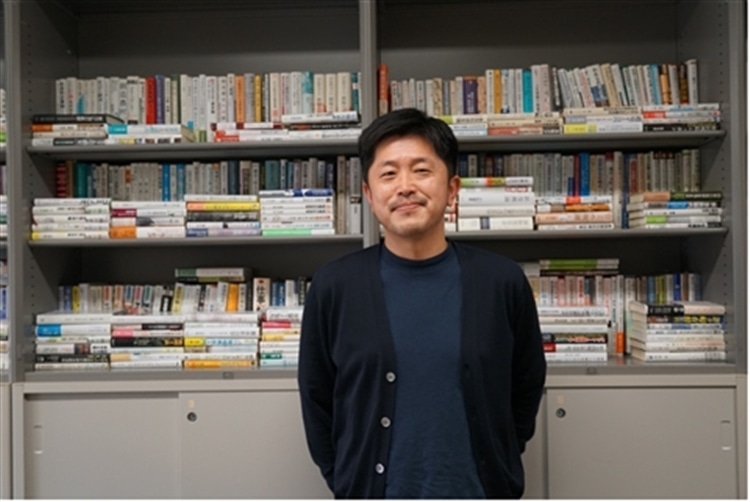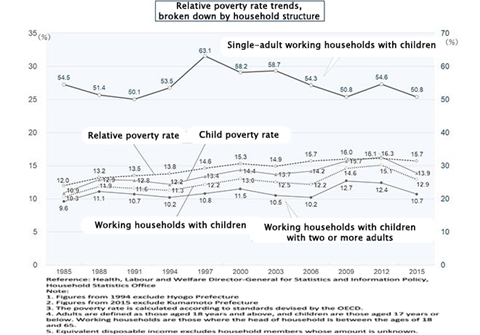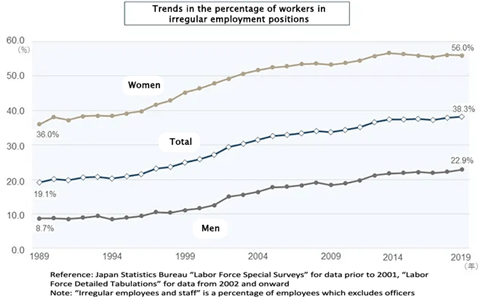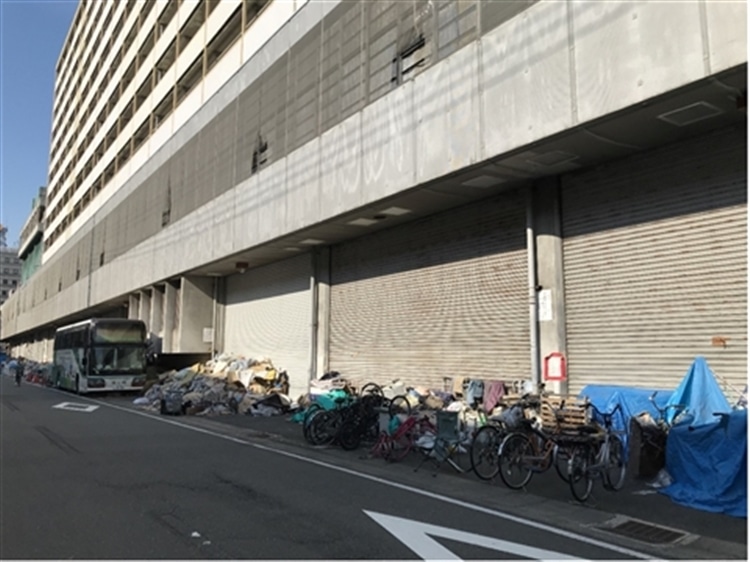- TOP
- Research
- Research Features List
- In the Field
- How Do We Prevent Social Isolation? Poverty in Increasingly Unequal Modern Japan

Everyone knows that poverty is a major problem in Japanese society. However, it is a fact that for all the people who are aware of the crisis, there are also people who have few opportunities to think about it in a meaningful way. What is the actual state of poverty in modern-day Japan, and what is needed to solve this problem? We spoke to Professor Tatsuya Shirahase, who has continued to conduct fieldwork in the Airin (formerly Kamagasaki) district of Osaka for over 20 years, and is confronting the issue of poverty.

Tatsuya Shirahase
Professor, Kwansei Gakuin University School of Human Welfare Studies
Ph.D. (Sociology), Certified Social Researcher, Certified Social Worker. Took up his current post after working as a Special Researcher at the Osaka City University Urban Research Plaza. Conducts fieldwork-based research on issues in cities and regions where disadvantages such as poverty are concentrated. Also conducts research on government policy and social action for solving issues, rather than simply assessing the actual situations. Has also been active as a social worker in the Nishinari district of Osaka City, and participated in the “Nishinari Special District Plan,” which has been moving forward since 2012, with the city at the center of the project. Has written books such as “Rethinking the Social Contributions of Religions” (Nakanishiya Shuppan) and “Poverty and Regions” (Chuko Shinsho).
Summary
・The relative poverty rate in Japan is 15.7%, which is a high rate among developed countries, ranking alongside America.
・Although the number of homeless people has drastically decreased over the past 20 years, social isolation is becoming a more serious issue.
・To bring about a society where everyone can be independent, we first need to know about the current state of affairs, and where we are headed in the future.
Japan’s relative poverty rate is on a gentle upswing, and income inequality is growing.
Japan has long had a deep-rooted image as a prosperous country that is easy to live in. Is the number of poor people in Japan increasing? In response to this question, Prof. Shirahase says “From the high-growth period of the Japanese economy up until the bubble period in the 1980s, many people believed that they were middle class. The relative poverty rate was lower than it is now, too. The relative poverty rate is a figure which shows the ratio of people with an income of less than one-half the national median disposable income. Actually, there was inequality at the time, but because many people were in a situation where it was easy for them to picture their future economic prospects, an era continued for a long time where poverty was unlikely to become a social problem. However, the collapse of the bubble economy caused society to be polarized into those with economic prospects and those without. The relative poverty rate has also been gently rising. It was 12% in 1985, but now it is at 15% or 16%.”
America is often pointed to as a country where income inequality has grown, but as Prof. Shirahase explains, the high relative poverty rate in Japan is right up there with the rate in America. Although the standard for relative poverty varies from country to country, there are many people in Japan who have realized the widening disparity over the last 20 years or so. Addressing income inequality has become a policy issue for Japan. The fluidization of employment and a low birthrate, coupled with a graying society, are cited as reasons for the widening gap. Another reason is the poverty of people in old age. Many people do not necessarily receive enough of a pension to live on. Moreover, Japan's overall income is declining moderately, and inequality in that situation makes for a difficult situation."

Although the number of people living on the street has decreased sharply, there are many people in unstable living situations
The issue of homelessness is also entwined with the relative poverty problem. In 2002, Japan enacted the Special Measures Law on Support for Homeless Self-Reliance. From that point forward, the state began taking measures to address the issue, and apparently, the number of people living in a homeless state has dropped sharply in the last 20 years. “When the government first did a survey in 2003, there were up to 25,000 people who were homeless. The reason that there are no statistics prior to 2003 is because homelessness was not yet a social problem. After that, due to support systems connecting homeless people to work, medical treatment, and welfare, that number dropped to 18,564 in 2007, and to 3,824 in 2021. There are efforts by the national and local governments, as well, and the number of homeless people has continued to decrease due to actors in both the public and private sectors, such as NPOs, religious groups, and private support groups. It is currently a very small category, even for a developed country.
On the other hand, the homelessness problem in the United States, which is the world's largest economy, is grave. There are limits to what the government, NGOs, and NPOs can do, and large companies such as Amazon and Apple are also embarking on large-scale support. "As a barrier to solving the issue, the supply of housing is a major issue in the United States, but it is not so severe in Japan. In addition, Japan has a social welfare system for relief, including a public assistance system. It could be said that escaping homelesness is relatively easy for people who use these systems. However, there are also people who do not take public assistance for various reasons, such as being worried that their families will be notified about it. Along with the decline in the number of people who are homeless, those who remain are getting older and older.
According to Prof. Shirahase, “This is not necessarily because it’s harder for the younger generation to become homeless, but because they’re connected to some form of support at an early stage.” However, he says that there is a different problem there, lying in wait. “As a result of efforts by NPOs, volunteer organizations, and the government to detect and eliminate poverty at an early stage, the number of people living on the street has decreased, but even in the young generation, there is no small number of people in unstable living situations without places of their own, who stay at their friends’ homes or live at Internet cafes.”
As progress is made with providing support, social loneliness is an issue that has come into sharp relief
Although the number of people living on the streets has greatly decreased, that does not necessarily mean that the homeless problem has been solved. How has the substance of the problem changed? For many years, Prof. Shirahase has continued to conduct fieldwork in the Airin district (formerly Kamagasaki) of Nishinari-ku, Osaka City, which has a reputation as a town for day laborers and had a large homeless population. He reflects that when he first visited the area about twenty years ago, “It was a great culture shock for me, because it was an area where you could easily see that the people there were living in poverty.
When I was a university student, sometime around the year 2000, that was precisely when the issue of inequality grew larger. It was the ice age for employment, and I myself was faced with difficult future prospects. Under those circumstances, I learned about the Airin district in class, and became interested in seeing the reality of the area where poverty is concentrated.” At the time, most of the social work organizations which provided support for the homeless were religious groups. In the Airin district, Christian groups would run soup kitchens, and became indispensable.” Before the government took steps to address the issue, religious groups had created an important safety net for homeless people. However, Prof. Shirahase thinks that this situation unintentionally caused the problem to be put off.

“Soup kitchens are also a typical first aid measure. Although they are temporary lifelines, continuing to use them every day creates dependency, which makes it difficult for homeless people to escape their situations. What people really need is support for raising their standard of living, so that they will not have to go to soup kitchens. Nonetheless, until the homeless issue became a social problem, this assistance played a key role in allowing homeless people to survive, even if they came to the kitchens with nothing. After that, the number of support groups would increase, and progress would be made not only with providing people with meals, but with housing support and employment support, as well.” Prof. Shirahase has continued to provide interpersonal support in the Airin district while conducting fieldwork, and he says that in the process, new problems have come to light.
“In the past, we simply perceived the issue as a mere unemployment problem, but after carefully providing employment support, it has become clear that there are many people who are unable to enter the general labor market. There are people whose current jobs do not suit them. This mismatch exhausts them mentally and physically, and their self-esteem steadily declines. On the surface, they have roofs over their heads, but without social connections, their loneliness will continue to become more serious. The truth is that people in the Airin district frequently die alone. There have been cases where people have received welfare and their lives appeared to have become stable, but we only discovered they were suffering from social loneliness after they died.”
At the least, we need a society where people can be positive about their own situations and existences
Raising an alarm, Prof. Shirahase notes “The problems in the Airin district are also ones that Japanese society will have to face going forward.” He points out that up until now, social loneliness, where opportunities to interact with family members and the local community are extremely scarce, was thought of as a special problem. However, it has gradually become a familiar issue.
“In modern Japanese society, it is not special for people to be unmarried, have no family, and live on their own. The number of people with unstable employment is also growing. 19.1% of workers were non-regular employees in 1989, during the bubble period, but that number rose to 38.3% in 2019. 56% of women and 22.9% of men were non-regular employees. Naturally, that situation is connected to the inability to start a family. We could say that the problems in the Airin district are already quietly occurring in other areas. Scarce social connections, uncertain income prospects, insufficient income in old age… All of these problems are starting to look familiar.”

However, even if employment support is provided, Prof. Shirahase believes that there is a limit to the approach of improving individual capabilities. This problem is not just limited to the homeless or to people with unstable employment, but affects a large number of people. “It’s good for people to actively engage in reskilling and develop the strength to adapt to social changes, but competition will grow fiercer, and there will always be a situation that they cannot keep up with. Unless we build a society where people have prospects for the future, even if they aren’t able to engage in such high-level work, and where they can at least be positive about their own situations and existences, social loneliness will become more and more of a problem. The important thing is how to increase the job options that people can choose, create jobs which allow them to connect with a more diverse array of people, and build an environment where people who have issues with work are able to do their jobs with peace of mind.”
Without a catalyst for people to take an interest in poverty, they will not regard it as their own problem
The era of uncertain future prospects has continued for over two decades, and these days, irregular employment has also become something that we take for granted. For a lot of people, they have no idea when they could become stricken by poverty, so it is a problem that they cannot treat as someone else’s business, so to speak. Despite this, after talking to Prof. Shirahase, we realized we had a preconception that poverty was not something that concerned us. “To be honest, without a catalyst, I don’t think poverty is something that people treat as their own problem. The division between the economically stable and unstable classes is widening, making it increasingly difficult for them to empathize with each other. If you understand poverty as a serious issue, then you might try to get involved in some way, and it might lead to making a donation if you’re unable to take action, but it’s difficult to create a cue for someone to take an interest. There are no easy solutions.”
In an ideal society, everyone should be able to live independently. What can we do to make this a reality? From Prof. Shirahase’s words, we realized that by getting a grasp on the current situation and having a proper understanding of where we are headed, we can take the first small step forward. “For example, people tended to think that the Airin district was a unique place, so they would not be able to make connections there, but it has steadily changed, and people are opening it up with the aim of shaping it for a new era. If people who run businesses were to get a grasp on the current situation, and think ‘If that sort of problem exists, maybe we can work together to do something about it,’ that would be appreciated.”

In the first place, “a society where people can be positive about their own situations and existences” is not an issue of poverty, but something that everyone needs. There are no simple solutions, but by learning about reality and turning our attention to the facts, we may be able to discover a catalyst for change.
